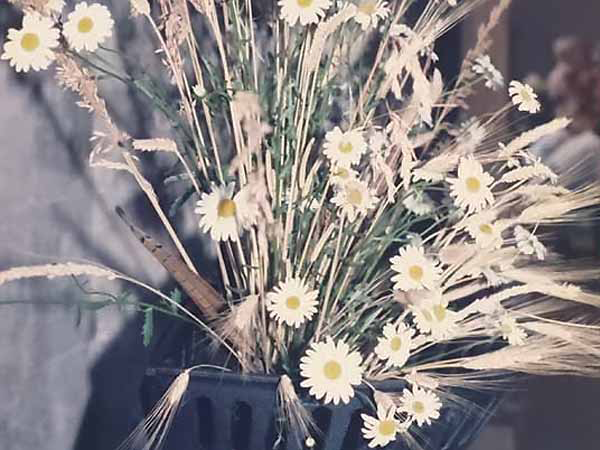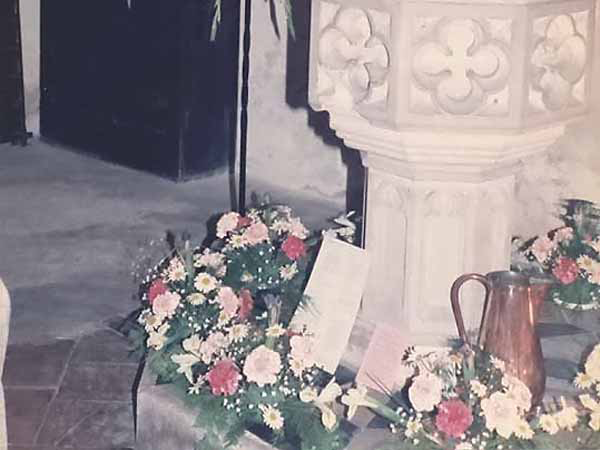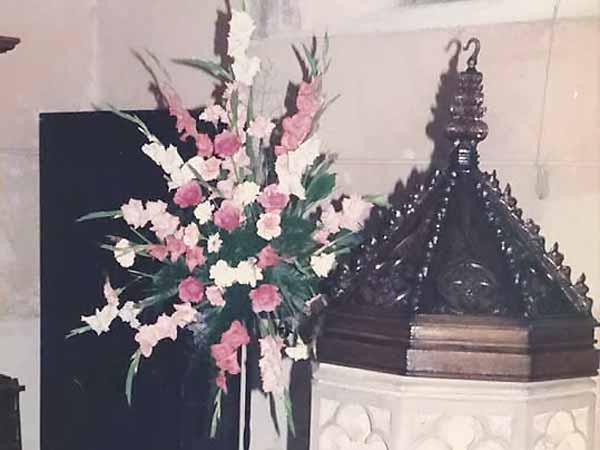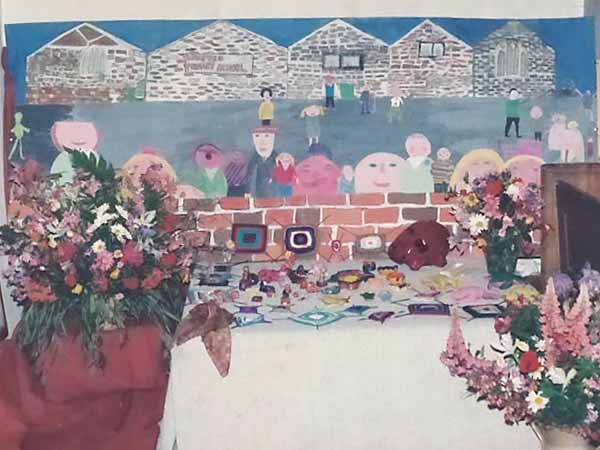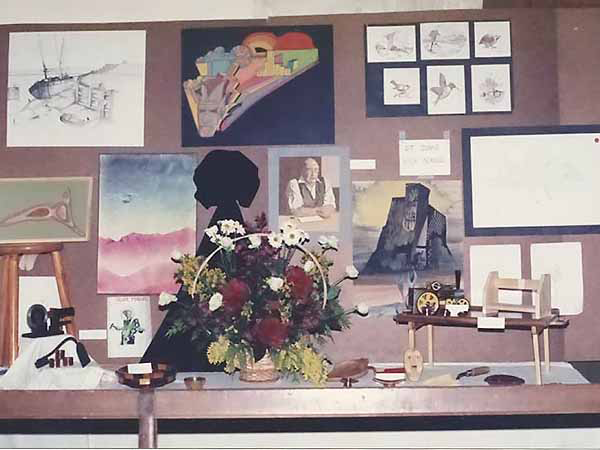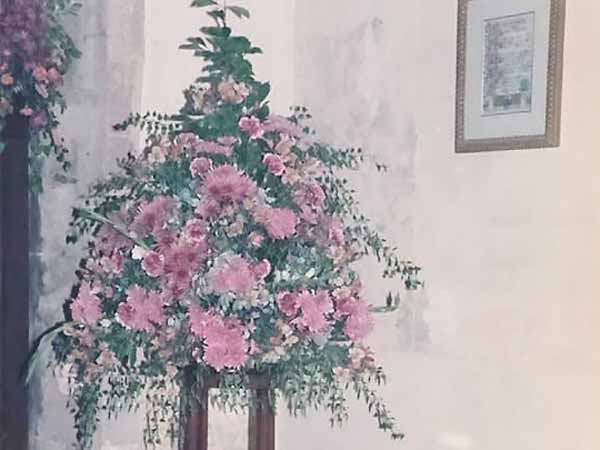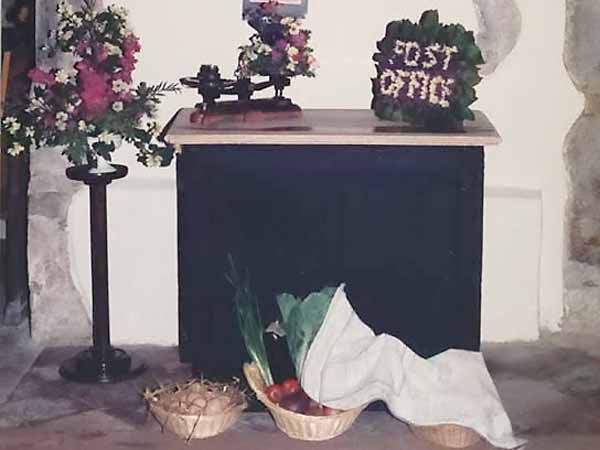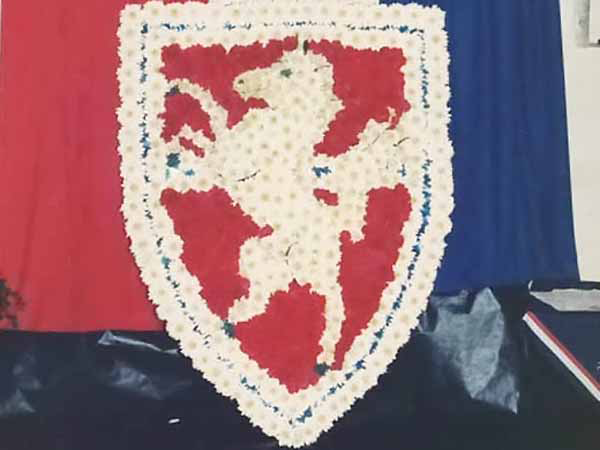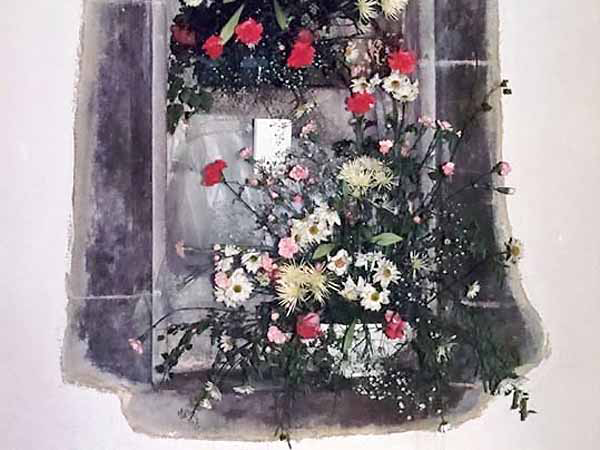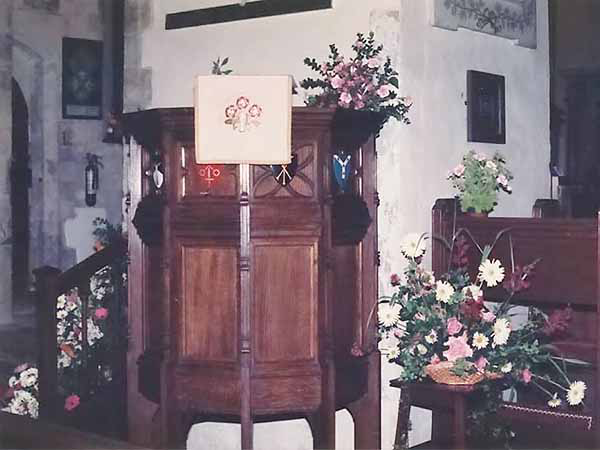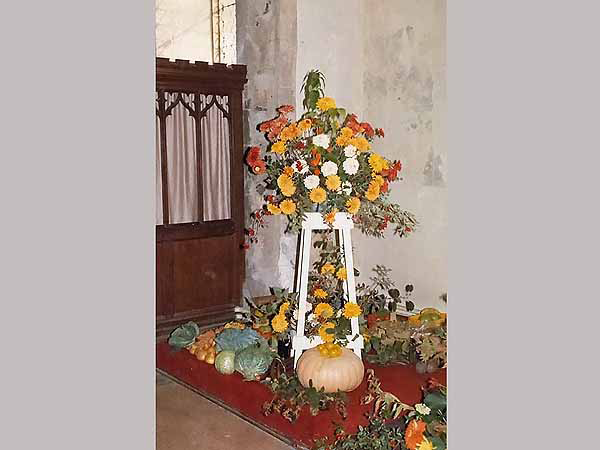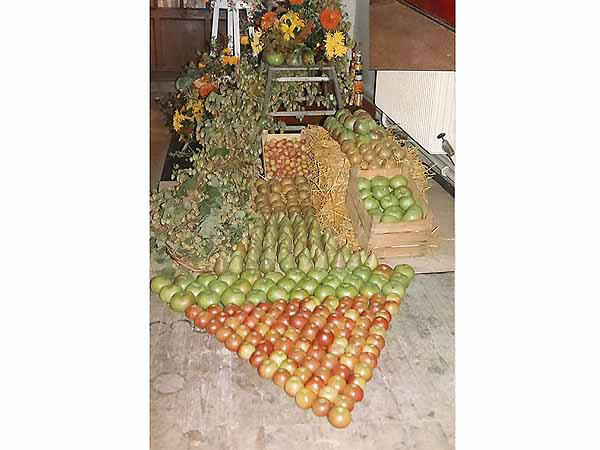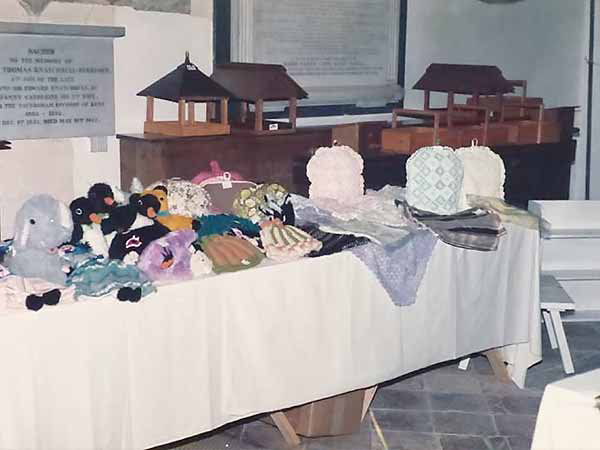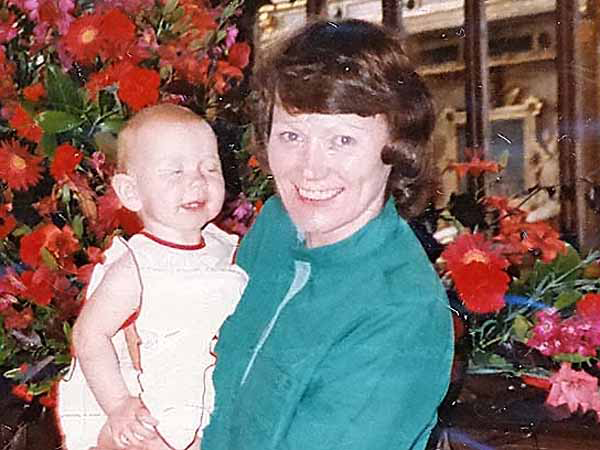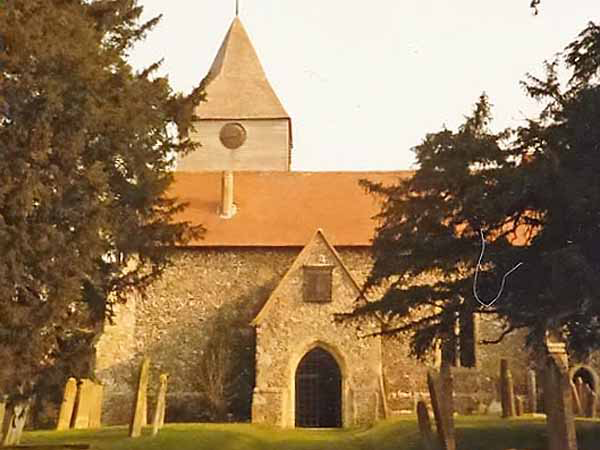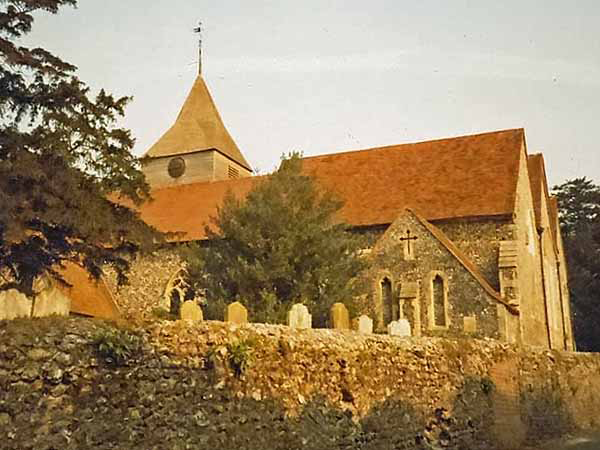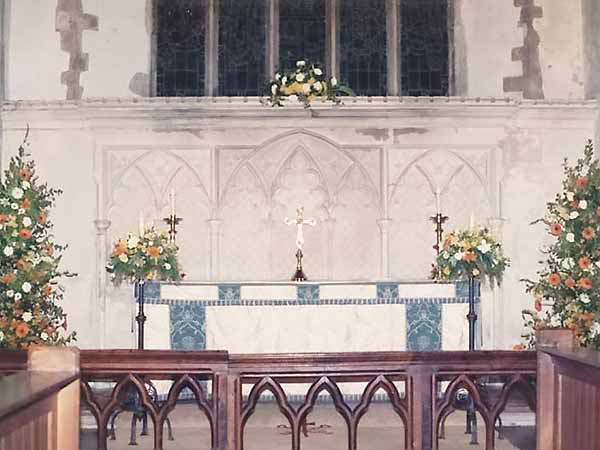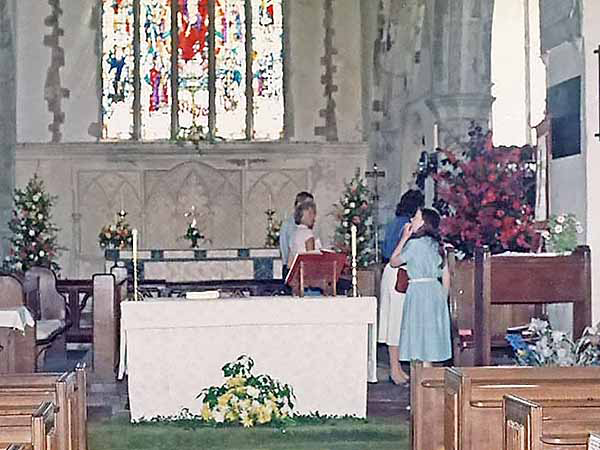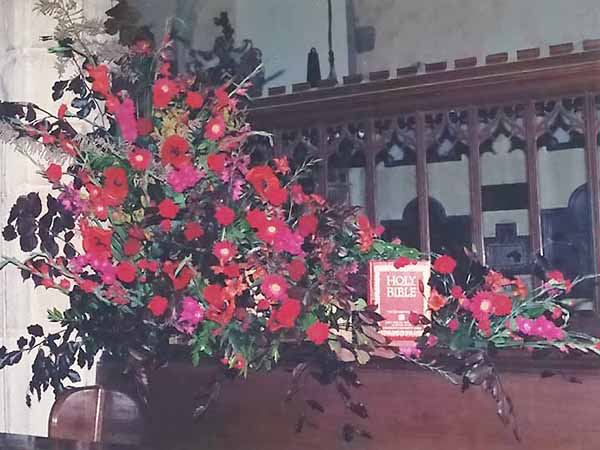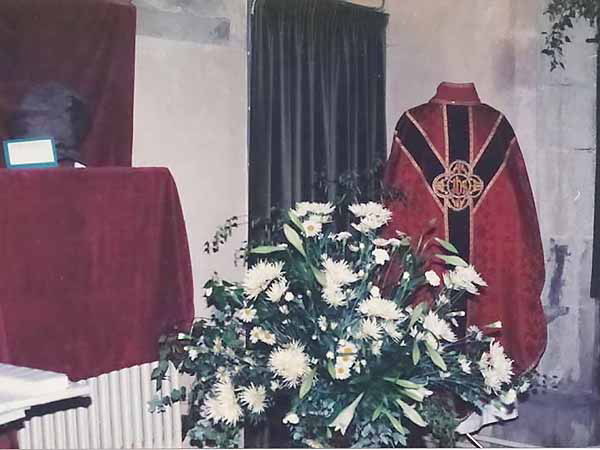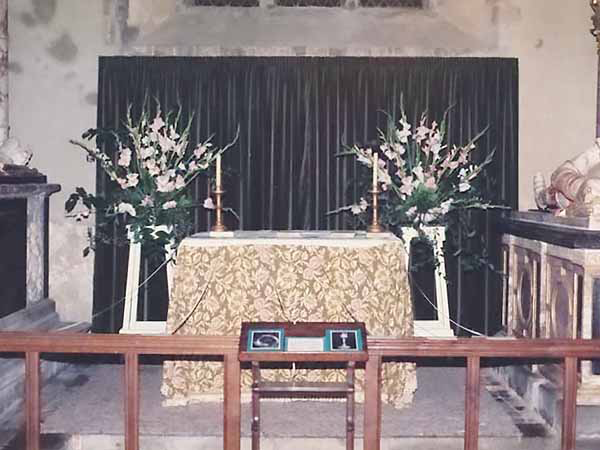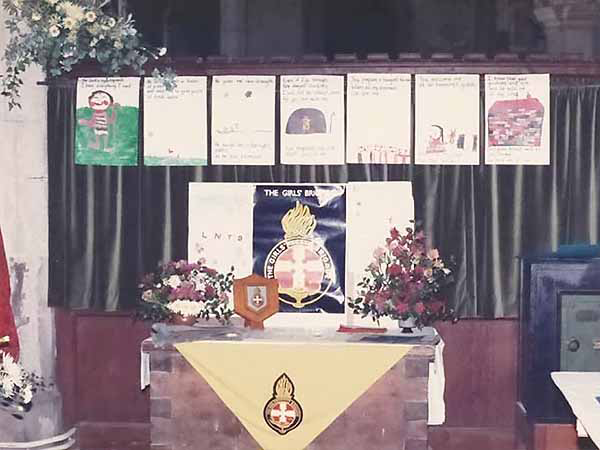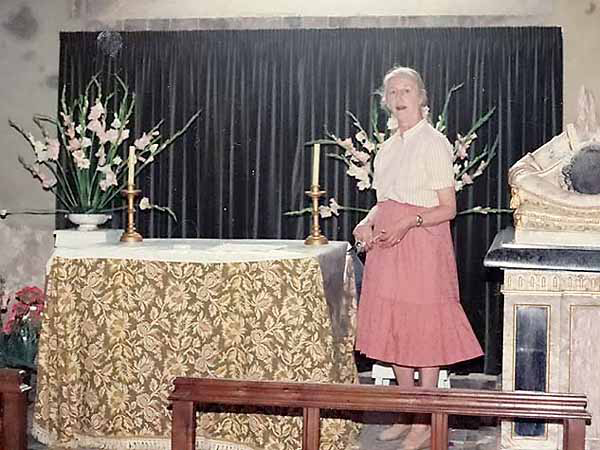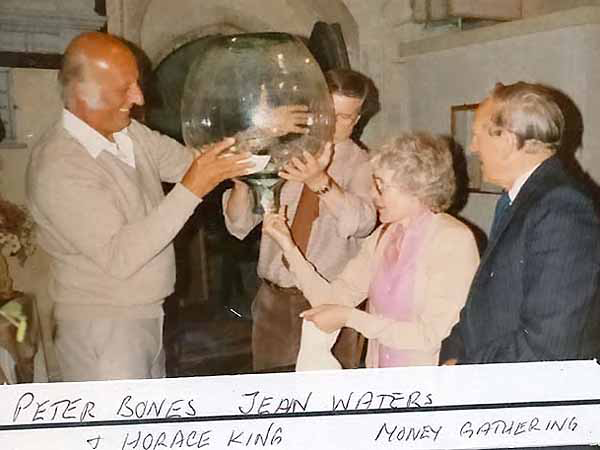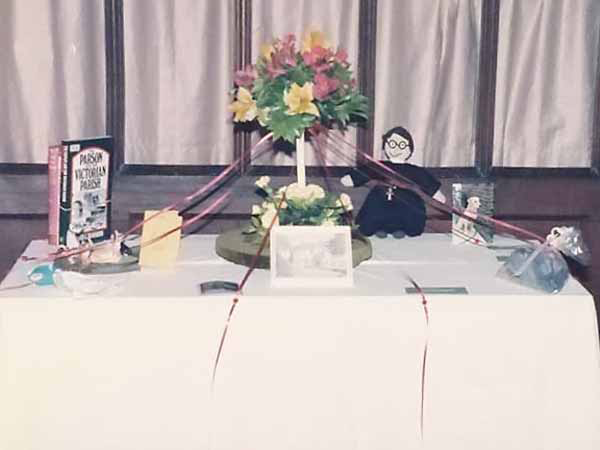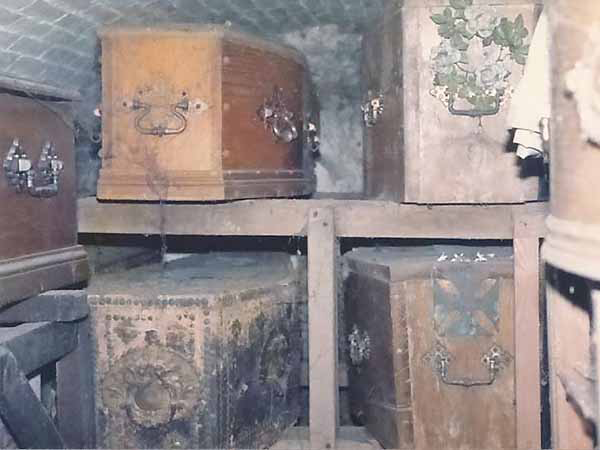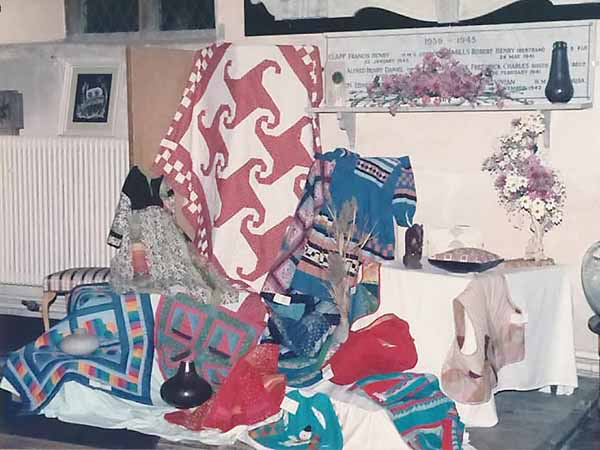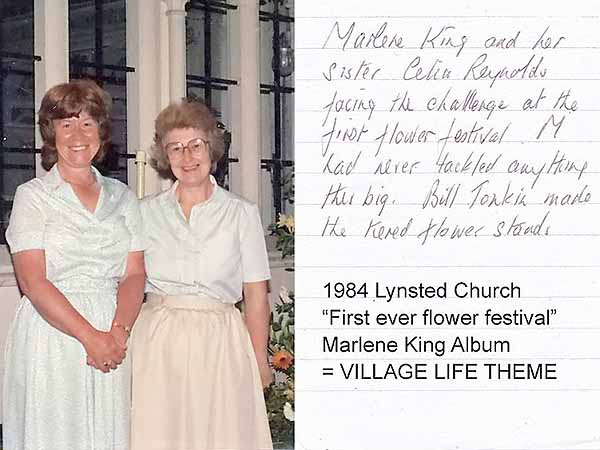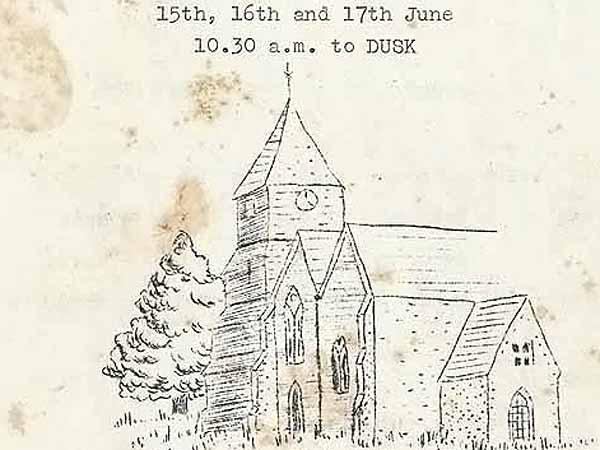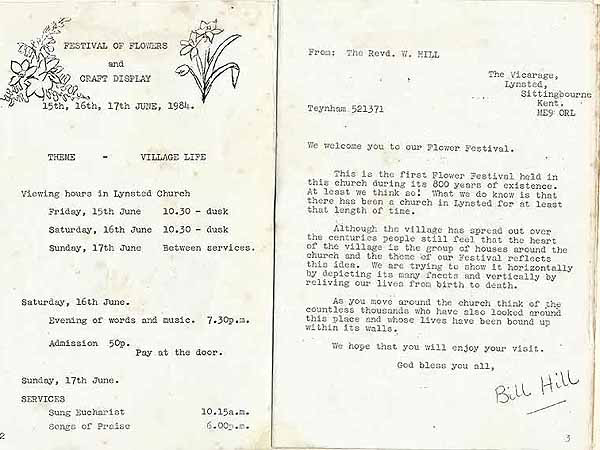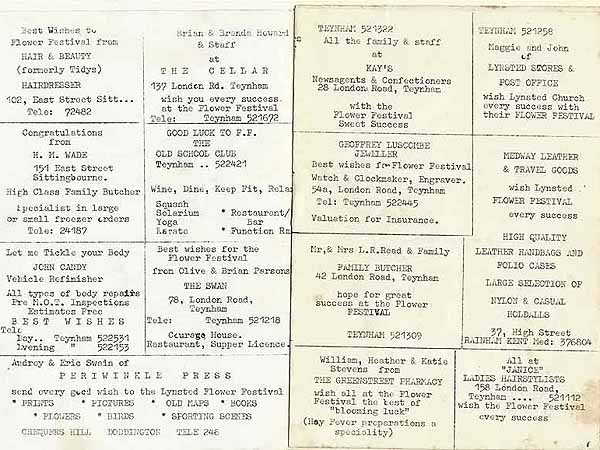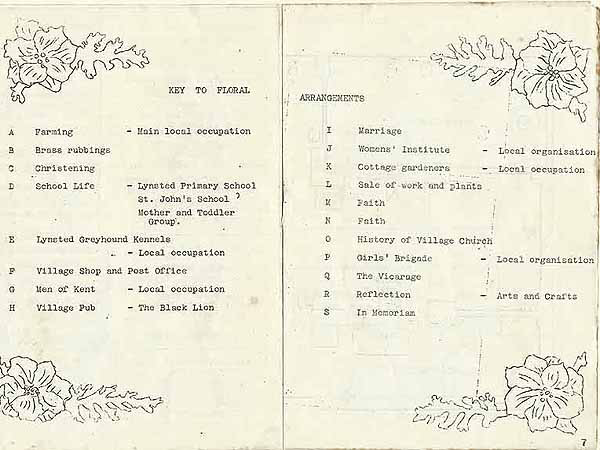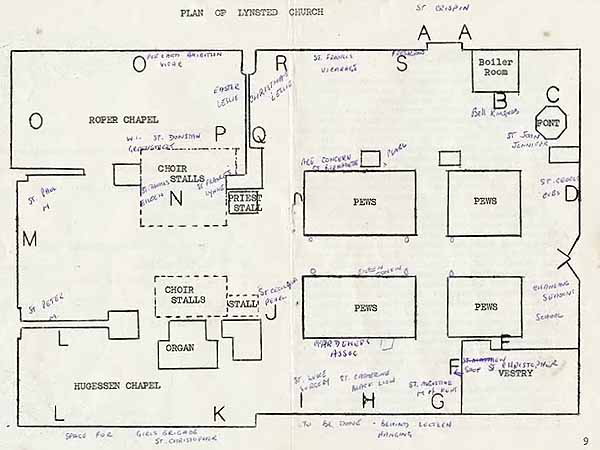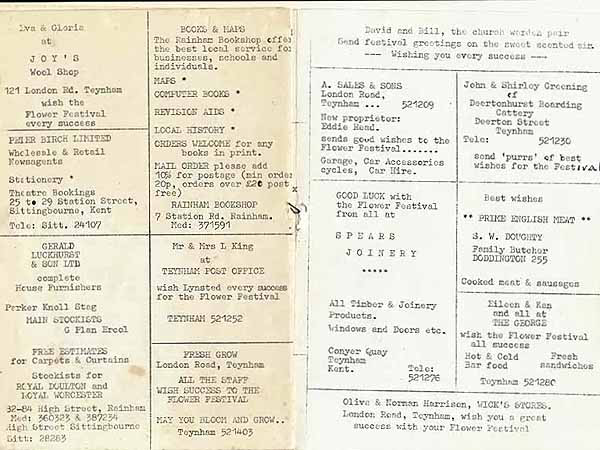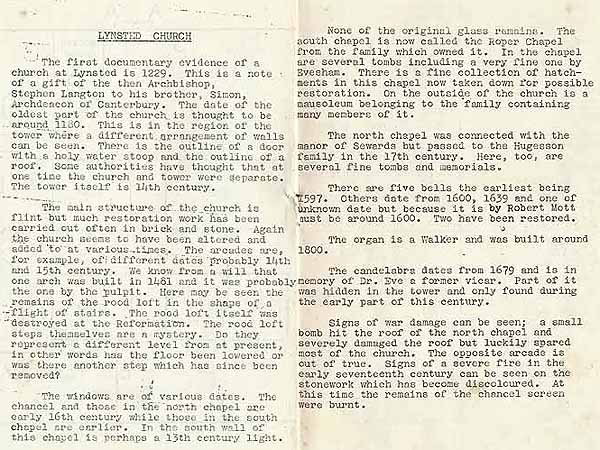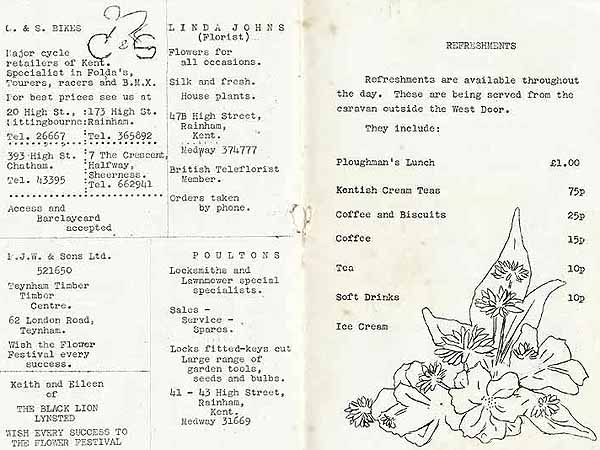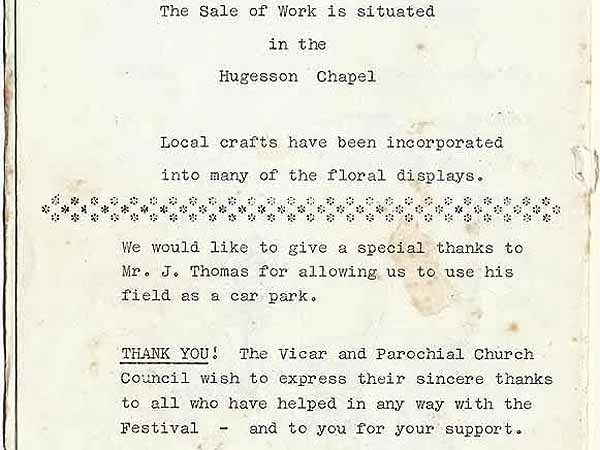Lynsted Church Flower Festivals - 1984 - "Village Life".
Background to the Flower Festivals: In the words of Rev. Bill Hill in the first (1984) Programme:
"This is the first Flower Festival held in this church during its 800 years of existence. At least we think so!
What we do know is that there has been a church in Lynsted for at least that length of time.
Although the village has spread out over the centuries people still feel that the heart of the village is the group of houses around the church and the theme of our Festival reflects this idea. We are trying to show it horizontally by depicting its many facets and vertically by reliving our lives from birth to death.
As you move around the church think of the countless thousands who have also looked around this place and whose lives have been bound up within its walls.
We hope that you will enjoy your visit.
God bless you all,
Bill Hill"
A short history of the Church was included in the programme, which read:
"LYNSTED CHURCH
The first documentary evidence of a church at Lynsted is 1229. This is a note of a gift of the then Archbishop, Stephen Langton to this brother , Simon, Archdeacon of Canterbury. The date of the oldest part of the church is thought to be around 1180. This is in the region of the tower where a different arrangement of walls can be seen. There is the outline of a door with a holy water stoop and the outline of a roof. Some authorities have thought that at one time the church and tower were separate. The tower itself is 14th century.
The main structure of the church is flint but much restoration work has been carried out often in brick and stone. Again the church seems to have been altered and added to at various times. The arcades are, for example, of different dates probably 14th and 15th century. We know from a will that one arch was built in 1481 and it was probably the one by the pulpit. Here may be seen the remains of the rood loft in the shape of a flight of stairs. The rood loft itself was destroyed at the Reformation. The rood loft steps themselves are a mystery. Do they represent a different level from at present, in other words has the floor been lowered or was there another step which has since been removed?
The windows are of various dates. The chancel and those in the north chapel are early 16th century while those in the south chapel are earlier. In the south wall of this chapel is perhaps a 13th century light.
None of the original glass remains. The south chapel is now called the Roper Chapel from the family which owned it. In the chapel are several tombs including a very fine one by Evesham. There is a fine collection of hatchments in this chapel now taken down for possible restoration. On the outside of the church is a mausoleum belonging to the family containing many members of it.
The north chapel was connected with the manor of Sewards but passed to the Hugesson family in the 17th century. Here, too, are several fine tombs and memorials.
There are five bells the earliest being 1597. Others date from 1600, 1639 and one of unknown date but because it is by Robert Nott must be around 1600. Two have been restored.
The organ is a Walker and was built around 1800.
The candelabra dates from 1679 and is in memory of Dr. Eve a former vicar. Part of it was hidden in the tower and only found during the early part of this century.
Signs of war damage can be seen; a small bomb hit the roof of the north chapel and severely damaged the roof but luckily spared most of the church. The opposite arcade is out of true. Signs of a severe fire in the early seventeenth century can be seen on the stonework which has become discoloured. At this time the remains of the chancel screen were burnt."

